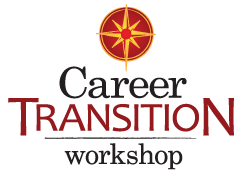By RACHEL PREMACK/BUSINESS INSIDER 6:00 AM EST
You might approach your LinkedIn summary the way you do the “objective” part of your résumé— you would rather ignore it, or you’re not sure if you need it, or maybe you’re not even sure what, exactly, it is.
Not unlike a cover letter, the LinkedIn summary section, which appears right below your profile photo, frames who you are and what you’re looking for.
“Whether you are looking for a new job, to stay up to date on the latest business news or looking for new leads,
consider your summary as your elevator pitch for whatever you are in it for,” Blair Decembrele, LinkedIn career expert, told Business Insider.
“Having a strong summary helps ensure you turn up in LinkedIn searches from recruiters, hiring managers, or other people who may want to work with you,” added Decembrele, who is also the director of editorial marketing and consumer communications at LinkedIn.
Here are Decembrele’s tips for writing a stellar summary:
Your LinkedIn summary is one of the first things a recruiter will see
Think of your summary as an opportunity to succinctly outline who you are and what you’re looking for.
“Your summary should include your experience, skills, motivations and interests,” Decembrele said. “It’s a great place to highlight what you want to be known for, and to let your personality shine through too.”
Think of the summary as a shortened cover letter
The ideal LinkedIn summary shows your background in a way that’s authentic and engaging. See this roundup of great LinkedIn profile summaries for help getting started. The best summaries might engage folks with an anecdote about how they got interested in their field, and follow up with what keeps them in their profession.
Don’t be afraid to add some humor or some personal background, like where you volunteer or some fun facts about your interests. You can also keep it simple by explaining your passion for your profession and what’s great about your company.
“It provides a holistic and rich digital representation of your story, and what makes you unique as a professional,” Decembrele said. “It should empower you to attract opportunity in a way that addresses your professional goals and aspirations, so make it authentic.”
Include keywords, not buzzwords
Decembrele said you should include plenty of search keywords in your summary. That way, recruiters will be able to easily find your profile.
“Potential employers search for summaries using keywords and the skills that they have listed in their job posting,” Decembrele said. “Read though the descriptions of the jobs you want and include those keywords in your summary if you have those skills.”
Go for specifics on what you bring to the company. Instead of writing that you have “an extensive writing background,” go with “six years of technical writing and editing experience.”
That way, recruiters know what exactly you bring to the table, and they’ll be able to quickly find you via search.
Write in the first person
This is you writing about you. So, Decembrele said to stick to “I.”
“Write how you talk and infuse your personality and tone, but be sure to keep it professional,” Decembrele said.
Make sure it’s at least 40 words, but no more than a few paragraphs
Keep it short and sweet — a few sentences or a few paragraphs, at most.
But not too short. Decembrele said 40 words is the minimum to show up on LinkedIn’s search.
Update your summary every six months
One of the biggest mistakes you can make with your LinkedIn summary is writing it and never looking at it again.
Decembrele said you should re-visit your summary every six months to a year to make sure it accurately reflects your career and path.
“Your LinkedIn summary and profile is a living, breathing entity that reflects the past, present and future of your career,” Decembrele said.
This article originally appeared on BusinessInsider.com.
